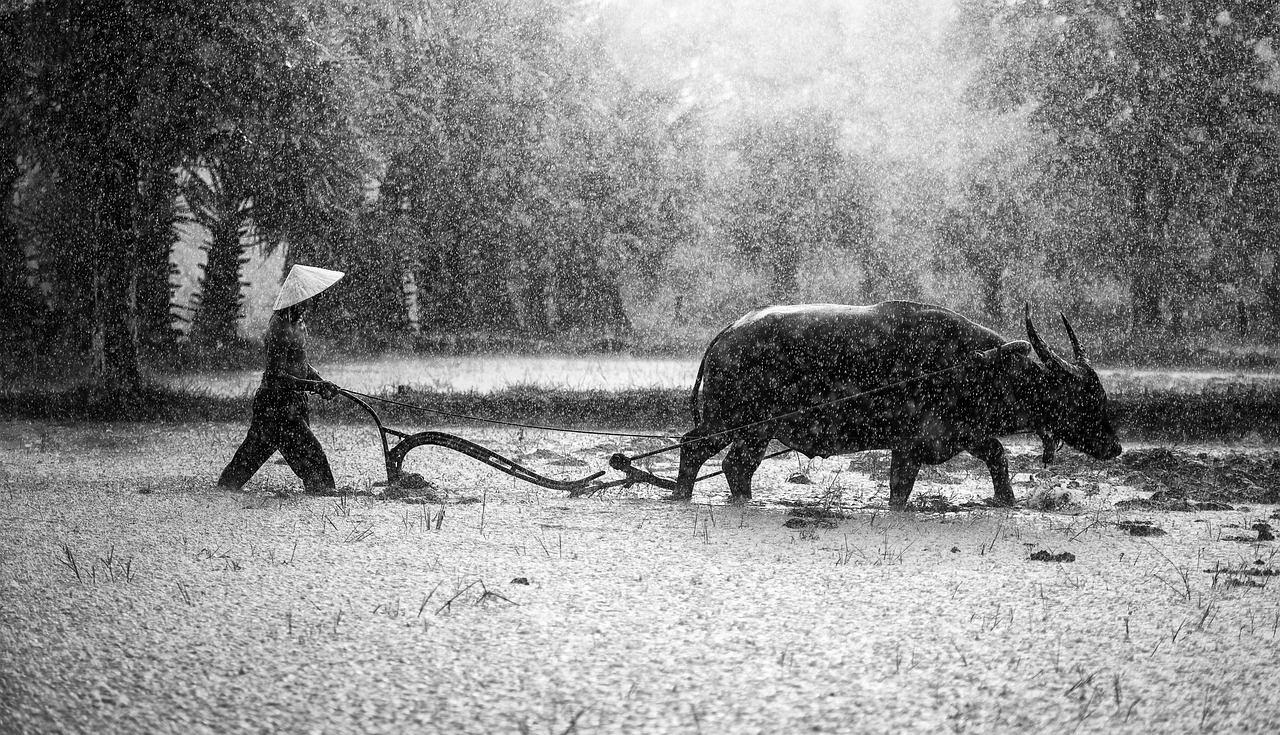Table of Contents
- The Traditional Way of Life
- The Economic Potential of Polar Regions
- Striking a Balance
- Economic Diversity: Polar regions should not rely solely on resource extraction. Diversifying their economies through sustainable practices, scientific research, and cultural tourism can reduce vulnerability to economic fluctuations.
The polar regions, the Arctic and Antarctic, are among the most unique and fragile environments on our planet. These remote areas, often associated with pristine ice sheets and breathtaking landscapes, have long captured the imagination of explorers and scientists alike. However, as climate change accelerates, these regions are gaining increasing attention for their economic potential, leading to a delicate balancing act between tradition and development.
“The polar regions, the Arctic and Antarctic, stand as pristine frontiers of our planet, embodying the essence of Earth’s natural beauty and fragility. These remote and often inhospitable areas have served as a canvas for explorers and a laboratory for scientists, sparking curiosity and wonder for generations. Yet, as the specter of climate change looms large, these regions are undergoing a profound transformation, one that necessitates a delicate and challenging balancing act between tradition and development:
Frozen Realms in Peril: The polar regions have long been viewed as frozen sanctuaries, where the ice sheets and glaciers hold secrets of Earth’s ancient past. Their landscapes are a testament to the planet’s geological history, and their ecosystems are delicate and finely tuned to the extreme conditions. However, climate change is causing rapid ice melt and altering these environments at an unprecedented rate, putting their fragile ecosystems at risk.
Tradition and Indigenous Peoples: The Arctic, in particular, is home to indigenous communities whose traditional ways of life have been intricately woven into the fabric of these landscapes for millennia. For these communities, the polar regions are not just places of economic potential but also the heart and soul of their cultural heritage. Balancing development with the preservation of indigenous traditions and rights is a pressing challenge.
Economic Potential: The polar regions are rich in natural resources, from minerals to fisheries, and offer strategic shipping routes as ice retreats. As a result, economic interests are growing, leading to debates about responsible resource extraction and sustainable development. Striking a balance between economic gain and environmental conservation is paramount.
Scientific Exploration: These regions are also hotbeds of scientific exploration. Researchers from around the world converge on the polar regions to study climate change, glaciology, oceanography, and ecosystems. Their work is crucial for understanding global environmental shifts and the consequences of climate change on a planetary scale.
Global Impact: The changes occurring in the polar regions have far-reaching global implications. Melting polar ice contributes to sea-level rise, impacting coastal communities worldwide. Altered weather patterns, disrupted ecosystems, and shifts in ocean currents affect climate systems on a global scale. The polar regions are, in many ways, the canaries in the coal mine for the health of our planet.
International Cooperation: Preserving the polar regions requires international cooperation on an unprecedented scale. Agreements like the Antarctic Treaty System and the Arctic Council aim to regulate activities and protect the environment. However, the delicate balance between conservation and development remains an ongoing challenge.
In this delicate dance between tradition and development, the polar regions stand as a test of our commitment to environmental stewardship. As we navigate this evolving landscape, we must prioritize the preservation of these unique and fragile environments, respect the rights and traditions of indigenous peoples, and find sustainable ways to harness economic potential without compromising the very ecosystems that make the polar regions so extraordinary. The fate of these frozen frontiers is intrinsically linked to the future of our planet, making it a global responsibility to protect and preserve these priceless realms for generations to come.”
Should you desire more in-depth information, it’s available for your perusal on this page: Arctic and Northern Policy Framework
The Traditional Way of Life
Indigenous communities in the polar regions have maintained a close relationship with the land and sea for millennia. Their traditional ways of life are intricately connected to the environment, with subsistence hunting, fishing, and gathering playing a central role. These communities, such as the Inuit in the Arctic and the indigenous peoples of Antarctica, have demonstrated remarkable resilience in the face of extreme conditions.
For them, the ice and snow are not just part of the scenery but a source of sustenance and cultural identity. Traditional knowledge and practices are handed down through generations, preserving a rich heritage that has endured for centuries.
To expand your knowledge on this subject, make sure to read on at this location: GlobalTrends_2040.pdf

The Economic Potential of Polar Regions
In recent years, the polar regions have been the focus of increasing economic interest. Several factors contribute to this:
In recent years, the polar regions have garnered growing economic interest, driven by several converging factors that are reshaping the economic landscape of these pristine and remote areas:
Resource Extraction: The polar regions are believed to hold significant reserves of valuable natural resources, including oil, gas, minerals, and fish. As global demand for these resources continues to rise, countries and companies are eyeing the Arctic and Antarctic as potential sources of wealth.
Climate Change Impact: The rapid warming of the polar regions due to climate change has led to the retreat of ice sheets and the opening up of new shipping routes. This has facilitated easier access to previously inaccessible areas for resource exploration, trade, and tourism.
Tourism Boom: The allure of polar landscapes, unique wildlife, and the thrill of adventure has led to a surge in polar tourism. Cruise ships now regularly ply the waters of the Arctic and Antarctic, bringing tourists and their economic contributions to these regions.
Scientific Research: The polar regions remain crucial for scientific research, especially in the context of climate change and environmental monitoring. As research efforts expand, they often bring with them economic opportunities in the form of research grants, jobs, and infrastructure development.
Geopolitical Interests: Geopolitical tensions have flared as nations stake their claims in the polar regions. The Arctic, in particular, has become a focal point for territorial disputes and geopolitical maneuvering, driven in part by potential access to resource-rich areas.
Infrastructure Development: Economic activities in polar regions require infrastructure development, such as ports, research stations, and transportation networks. These projects generate economic activity and jobs, both locally and internationally.
Environmental Concerns: The delicate ecosystems of the polar regions are a source of concern. Balancing economic interests with environmental preservation is a complex challenge. Sustainable practices and regulations are being developed to mitigate potential environmental impacts.
Legal Frameworks: The establishment of international agreements and legal frameworks, such as the United Nations Convention on the Law of the Sea (UNCLOS), plays a pivotal role in regulating economic activities in the polar regions. These frameworks provide guidelines for resource management and dispute resolution.
Technological Advancements: Advancements in technology, including icebreaker vessels, satellite communication, and drilling equipment, have expanded the possibilities for economic activities in polar regions, making previously challenging ventures more feasible.
In conclusion, the growing economic interest in the polar regions reflects a complex interplay of resource-driven opportunities, environmental concerns, geopolitical interests, and technological advancements. As these regions continue to evolve, it becomes increasingly important to strike a balance between economic development and the preservation of their unique and fragile ecosystems. The challenge lies in harnessing the economic potential while safeguarding the polar regions for future generations.
To expand your knowledge on this subject, make sure to read on at this location: China’s Polar Silk Road: Implications for the Arctic Region > Air …

Striking a Balance
Balancing economic development with the preservation of traditional ways of life and the fragile polar ecosystems is a formidable challenge. There are several key considerations:
Balancing the imperative of economic development with the imperative to preserve traditional ways of life and the fragile polar ecosystems presents an intricate and formidable challenge. Within this delicate equilibrium, several key considerations emerge, each carrying profound implications for the future of these unique regions:
Sustainable Resource Management: At the heart of this challenge lies the responsible stewardship of the region’s abundant natural resources. Striking a balance between extracting valuable resources, such as minerals and fisheries, for economic gain while ensuring their sustainable use is paramount. Collaborative efforts to establish effective conservation measures and enforce responsible harvesting practices are essential to safeguarding the polar ecosystems and the livelihoods of indigenous communities.
Indigenous Rights and Cultural Preservation: The preservation of traditional ways of life, cultures, and knowledge held by indigenous communities is of paramount importance. Ensuring that economic development initiatives respect the rights, autonomy, and cultural heritage of these communities is not only a moral imperative but also a foundation for sustainable development. Empowering indigenous voices in decision-making processes is central to achieving this balance.
Tourism Management: Polar regions have witnessed a surge in tourism in recent years. Managing the influx of visitors while mitigating the impact on fragile ecosystems demands meticulous planning and regulations. Striking a balance between the economic benefits of tourism and minimizing ecological disruption is an ongoing challenge. Effective guidelines, responsible tour operators, and visitor education play a pivotal role in this endeavor.
Climate Change Mitigation: Both polar regions are particularly vulnerable to the impacts of climate change. The accelerating melting of polar ice and the associated rise in sea levels necessitate global efforts to mitigate greenhouse gas emissions. Achieving a balance between economic development and climate change mitigation involves transitioning to sustainable energy sources and adopting eco-friendly practices that reduce carbon footprints.
Scientific Research and Environmental Monitoring: Continued scientific research is essential for understanding polar ecosystems and monitoring the effects of human activities. A delicate equilibrium must be maintained between conducting valuable research and minimizing the disturbance to these pristine environments. Collaboration between scientists, governments, and local communities is crucial for striking this balance.
International Cooperation: The polar regions are global commons, and the management of their resources and preservation of their ecosystems require international cooperation. Establishing treaties, agreements, and regulatory frameworks that promote sustainability and protect these regions from exploitation is imperative. Diplomacy and consensus-building are essential tools in this multifaceted endeavor.
Adaptation Strategies: Recognizing that change is inevitable, developing adaptation strategies for polar communities is crucial. These strategies should encompass economic diversification, education, and infrastructure development that are resilient to evolving environmental conditions while respecting traditional ways of life.
In conclusion, the challenge of balancing economic development with the preservation of polar ecosystems and traditional cultures is multifaceted and complex. It calls for a holistic, collaborative, and forward-thinking approach that considers the long-term well-being of these regions and their inhabitants, as well as the global ecological significance of the polar environments.
Explore this link for a more extensive examination of the topic: Achieving Sustainable Development and Promoting Development …

Economic Diversity: Polar regions should not rely solely on resource extraction. Diversifying their economies through sustainable practices, scientific research, and cultural tourism can reduce vulnerability to economic fluctuations.
In conclusion, the economic potential of polar regions is undeniable, but it comes with significant challenges. Achieving a balance between economic development, environmental conservation, cultural preservation, and scientific progress requires careful planning, collaboration, and a commitment to responsible practices. The polar regions are not just frontiers for economic opportunity but also laboratories for finding innovative solutions to some of the world’s most pressing challenges.
In conclusion, the economic potential of polar regions is undeniable, but it comes with significant challenges that demand thoughtful consideration and a comprehensive approach. The polar regions, with their vast resources and strategic significance, have emerged as pivotal frontiers for economic development in the 21st century. Yet, realizing this potential while safeguarding the fragile Arctic and Antarctic environments, preserving the rich cultural heritage of indigenous peoples, and advancing scientific understanding is a complex endeavor.
Balancing Act: Achieving a balance between economic development and environmental conservation is paramount. Polar ecosystems are incredibly sensitive, and any industrial activity must be conducted with the utmost care to minimize ecological impact. This requires the adoption of stringent regulations, adherence to international environmental agreements, and the application of cutting-edge technologies that can mitigate harm to the delicate Arctic and Antarctic ecosystems.
Respecting Indigenous Cultures: The unique cultures and traditional ways of life of indigenous peoples in the polar regions are integral to the human heritage of these areas. As economic activities increase, it is imperative to ensure that the rights, interests, and cultural practices of these communities are respected and protected. Collaborative approaches that involve indigenous communities in decision-making processes are essential to finding common ground and fostering mutual benefit.
Scientific Innovation: The polar regions are not just resource-rich areas but also laboratories for scientific discovery. Researchers from around the world study these extreme environments to better understand climate change, biodiversity, and a range of other critical scientific questions. The economic development of polar regions should complement scientific progress by supporting research initiatives and investing in sustainable technologies that can provide valuable insights into global challenges.
International Cooperation: The polar regions are governed by complex international agreements and treaties, including the Antarctic Treaty System and the Arctic Council. International cooperation is essential for addressing the multifaceted challenges posed by polar economic development. Collaborative efforts can help harmonize regulations, share best practices, and ensure that the interests of all nations and stakeholders are considered.
Responsible Practices: Responsible and sustainable practices are non-negotiable when it comes to polar economic development. Companies and governments operating in these regions must commit to high environmental and ethical standards. From responsible resource extraction to reducing emissions and waste, the emphasis should be on creating a model of economic development that not only benefits the present but also safeguards the future.
In the final analysis, the polar regions represent both a promise and a responsibility. The economic opportunities are vast, but they must be harnessed with care and consideration for the broader interests of humanity and the planet. Achieving this balance will require a concerted effort from governments, industries, indigenous communities, and the global scientific community. Ultimately, the polar regions are not just frontiers for economic opportunity but also crucibles for innovation and models of sustainable development, offering the world an opportunity to demonstrate that economic progress can coexist with environmental preservation, cultural respect, and scientific advancement.
To expand your knowledge on this subject, make sure to read on at this location: GlobalTrends_2040.pdf

More links
Looking for more insights? You’ll find them right here in our extended coverage: Arctic Governance: balancing challenges and development
